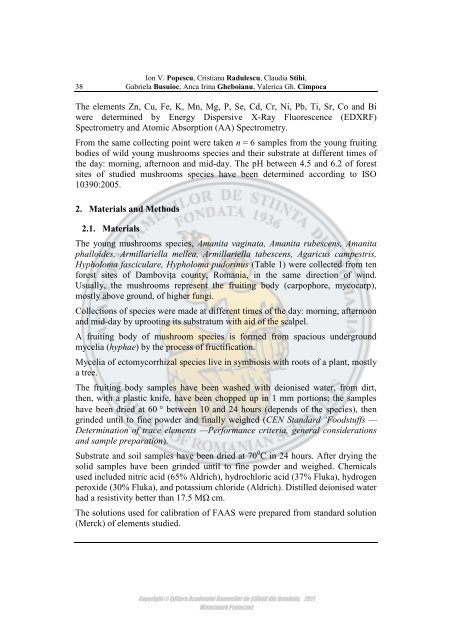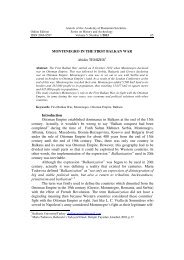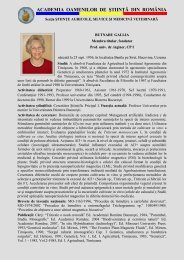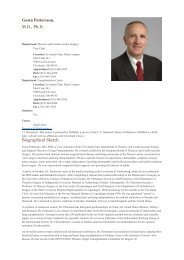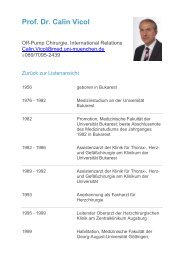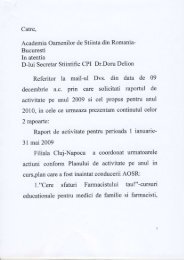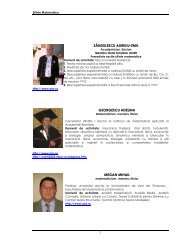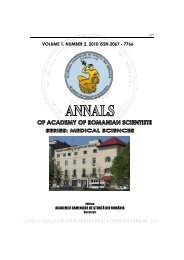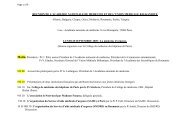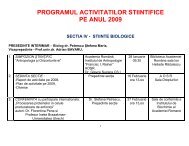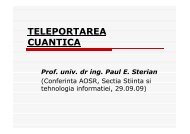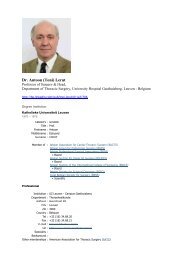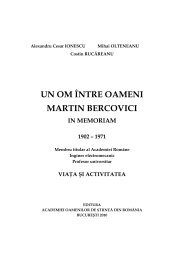Volume 3 nr 1 / 2011 - Academia Oamenilor de Stiinta din Romania
Volume 3 nr 1 / 2011 - Academia Oamenilor de Stiinta din Romania
Volume 3 nr 1 / 2011 - Academia Oamenilor de Stiinta din Romania
- No tags were found...
You also want an ePaper? Increase the reach of your titles
YUMPU automatically turns print PDFs into web optimized ePapers that Google loves.
Ion V. Popescu, Cristiana Radulescu, Claudia Stihi,38 Gabriela Busuioc, Anca Irina Gheboianu, Valerica Gh. CimpocaThe elements Zn, Cu, Fe, K, Mn, Mg, P, Se, Cd, Cr, Ni, Pb, Ti, Sr, Co and Biwere <strong>de</strong>termined by Energy Dispersive X-Ray Fluorescence (EDXRF)Spectrometry and Atomic Absorption (AA) Spectrometry.From the same collecting point were taken n = 6 samples from the young fruitingbodies of wild young mushrooms species and their substrate at different times ofthe day: morning, afternoon and mid-day. The pH between 4.5 and 6.2 of forestsites of studied mushrooms species have been <strong>de</strong>termined accor<strong>din</strong>g to ISO10390:2005.2. Materials and Methods2.1. MaterialsThe young mushrooms species, Amanita vaginata, Amanita rubescens, Amanitaphalloi<strong>de</strong>s, Armillariella mellea, Armillariella tabescens, Agaricus campestris,Hypholoma fasciculare, Hypholoma pudorinus (Table 1) were collected from tenforest sites of Dambovița county, <strong>Romania</strong>, in the same direction of wind.Usually, the mushrooms represent the fruiting body (carpophore, mycocarp),mostly above ground, of higher fungi.Collections of species were ma<strong>de</strong> at different times of the day: morning, afternoonand mid-day by uprooting its substratum with aid of the scalpel.A fruiting body of mushroom species is formed from spacious un<strong>de</strong>rgroundmycelia (hyphae) by the process of fructification.Mycelia of ectomycorrhizal species live in symbiosis with roots of a plant, mostlya tree.The fruiting body samples have been washed with <strong>de</strong>ionised water, from dirt,then, with a plastic knife, have been chopped up in 1 mm portions; the sampleshave been dried at 60 between 10 and 24 hours (<strong>de</strong>pends of the species), thengrin<strong>de</strong>d until to fine pow<strong>de</strong>r and finally weighed (CEN Standard ‘Foodstuffs —Determination of trace elements —Performance criteria, general consi<strong>de</strong>rationsand sample preparation).Substrate and soil samples have been dried at 70 0 C in 24 hours. After drying thesolid samples have been grin<strong>de</strong>d until to fine pow<strong>de</strong>r and weighed. Chemicalsused inclu<strong>de</strong>d nitric acid (65% Aldrich), hydrochloric acid (37% Fluka), hydrogenperoxi<strong>de</strong> (30% Fluka), and potassium chlori<strong>de</strong> (Aldrich). Distilled <strong>de</strong>ionised waterhad a resistivity better than 17.5 MΩ cm.The solutions used for calibration of FAAS were prepared from standard solution(Merck) of elements studied.Copyright © Editura Aca<strong>de</strong>miei <strong>Oamenilor</strong> <strong>de</strong> Știință <strong>din</strong> România, <strong>2011</strong>Watermark Protected


